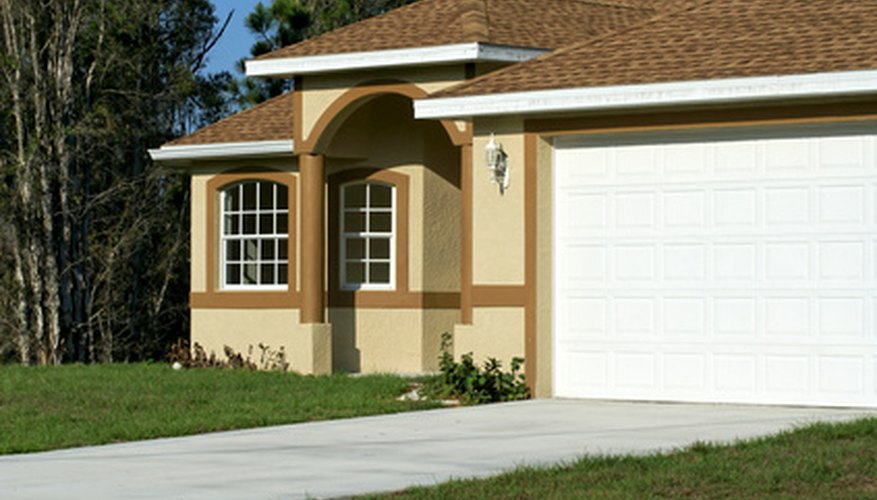Converting an underused garage to everyday living space is a simple and effective way to add square footage to your home. It's much less expensive than an addition and adds breathing room to a growing family's nest. Since the floor of a garage is typically 20 cm (8 inches) lower than the rest of the house, you may want to raise the floor.
- Converting an underused garage to everyday living space is a simple and effective way to add square footage to your home.
- Since the floor of a garage is typically 20 cm (8 inches) lower than the rest of the house, you may want to raise the floor.
Check with your local city or county for building codes in your area. Measure the height of the room from the house level up to the rafters to make certain the clearance is within the building standards. You may need to add trusses, since garage trusses can be set 60 cm (24 inches) apart, but trusses over living space must be 32.5 cm (16 inches) apart. If you need to create more head space, consider a cathedral ceiling if the garage can accommodate one, or have one step down into the room.
Clean out the garage and sweep floor free of all debris.
Mark a line around the garage to show where the house level is. Garage floors often slope, so don't measure from the floor up, but rather from the house line down. Leave room for a 1.8 cm (3/4 inch) plywood subfloor, plus the thickness of the flooring that will be installed, when determining how high your decking should be.
- Clean out the garage and sweep floor free of all debris.
- Mark a line around the garage to show where the house level is.
Lay down a protective barrier of polythene sheeting. Overlap the sheets by several inches and tape them with masking tape to ensure a waterproof barrier. Affix the sheets to the garage perimeter with masonry nails. Apply caulk to the edges to seal, using a caulk gun.
Build a frame from pressure-treated lumber to the height you have determined. Place the studs 32.5 cm (16 inches) apart. Add shims to maintain a level floor throughout, as necessary. Check level constantly during this process. Tie the frame into the walls with masonry nails.
Add insulation between the studs, as well as any plumbing pipes or electrical wires needed.
Lay 1.8 cm (3/4 inch) plywood on top of the stud frame, running the plywood sheets across the studs. Nail into the studs with 3.7 cm (1 1/2 inch) wood nails.
- Build a frame from pressure-treated lumber to the height you have determined.
- Lay 1.8 cm (3/4 inch) plywood on top of the stud frame, running the plywood sheets across the studs.
Finish the floor with your choice of carpet, tile or wood.
TIP
Add windows and doors before raising the floor, keeping the new floor level in mind. When framing in the garage door, add a base of foundation materials to match the rest of the house. Garage studs are usually 5 by 10 cm (2 by 4 inch) boards. You may need to add furring strips to get the proper amount of insulation into the exterior walls.
